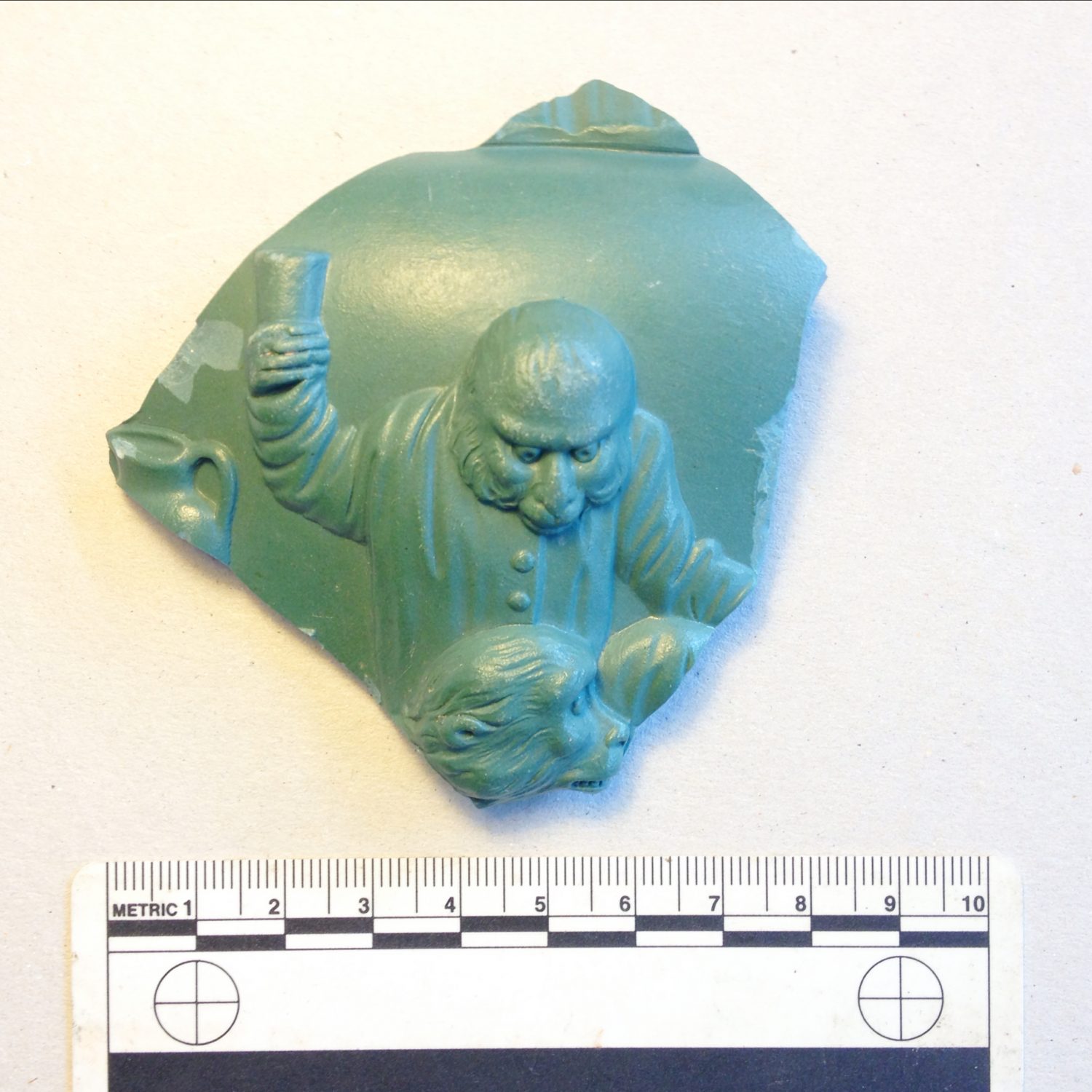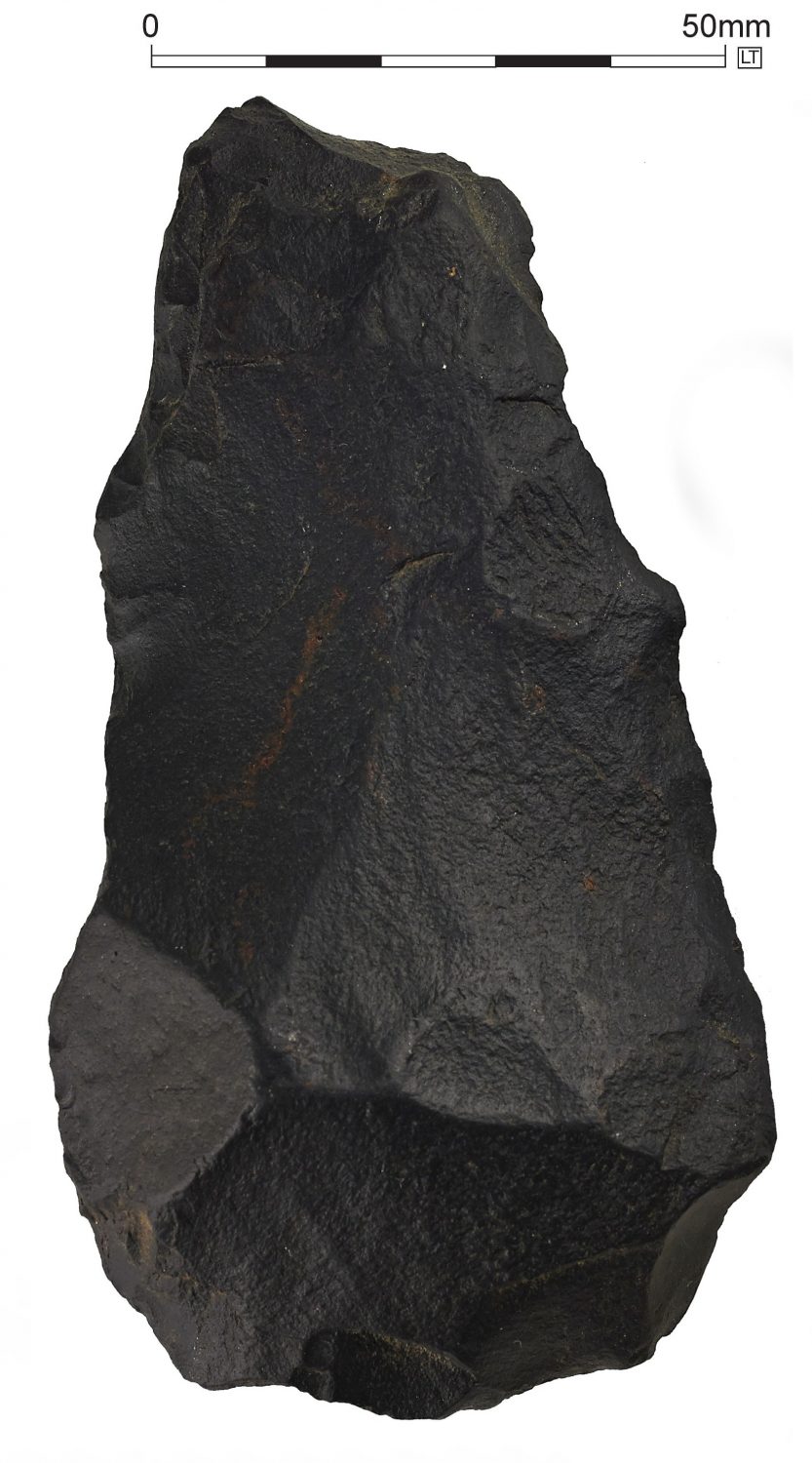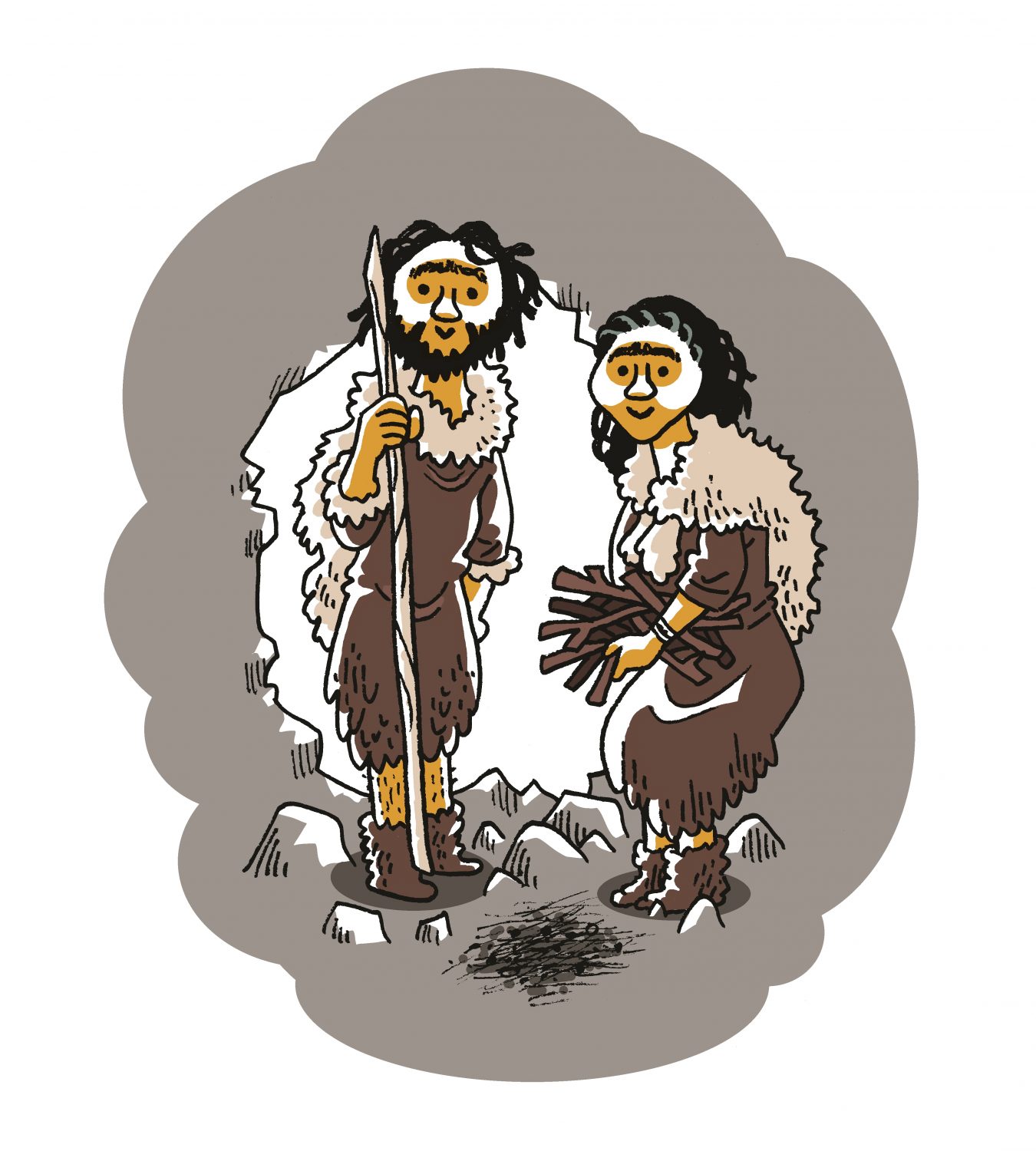Human evolution
- 12th November 2018
Few areas of science generate as much controversy and debate as human evolution. The teapot sherd discovered during an excavation at Kilbury Drive, Worcester, shows a snippet of a scene in which apes dressed in human clothes are brawling in a tavern. It is an example of a popular Victorian ‘meme’: satirising the idea that humans are closely related to other primates.

Discovered in Worcester in 2013: teapot fragment (from c.1865) depicting apes in a tavern brawl, mocking Darwin’s theory of evolution.
Our last common ancestor with our closest living relatives, chimpanzees, lived in Africa 6-8 million years ago. Both lineages have evolved along separate paths since then. Our branch of the family tree includes many species: all disappeared, but some live on in our genes.
The earliest hominin species – members of the genus Homo, such as Homo habilis and Homo erectus – did not inhabit northern Europe. Research and debate continues at a rapid pace into the relationship between early human species, their capabilities and areas inhabited. Previously unknown species continue to turn up as well.
Within the last million years, there has been at least four early human species living in Europe: Homo antecessor, Homo heidelbergensis, Homo neanderthalensis and Homo sapiens (us). The oldest, and possibly the first to reach Britain, has to date only been found within western Europe. Homo heidelbergensis were tall and competent toolmakers with large brains – the Allesborough handaxe, found near Pershore, was probably made by these early ancestors 300,000 – 420,000 years ago.

Allesborough handaxe
Neanderthals are often caricatured as dim, lumbering brutes. They did have strong, muscular bodies with wide hips and shoulders. Their skulls were long and low with a prominent brow ridge above their eyes. The central part of the face protruded forward and they would have had a very big, wide nose, which moistened and warmed the air they breathed.
Appearances can be deceptive. Neanderthals were also skilful toolmakers and hunters who became increasingly tied to the movements of the large animals they hunted. They seem to have coped with the cold, presumably with the help of clothing and fire: it’s thought that Neanderthal’s needed to cover about 80% of their body with clothing to keep warm. Recent discoveries have shown that they buried their dead, created art and could probably speak in a similar way.

Our genetic cousins – Neanderthals (© Andi Watson)
Anatomically modern humans, Homo sapiens, appeared in Africa by 200,000 years ago. From there, people spread out across Asia, down to Australia, and into Europe. Around 40,000 years ago, the Neanderthals living in Europe died out – leaving us as the last remaining hominin species on earth. Whilst Homo sapiens do have larger brains than most other human species, it’s important to remember that we are not the height of evolution, but just one branch on an ever growing tree.
With the advent of techniques for extracting DNA from ancient bones, we’re starting to realise just how much we owe to some of our early ancestors. Everyone of European descent alive today owes around 2-4% of their genetic code to our Neanderthal cousins, thanks to ancient interbreeding with modern Homo sapiens.
Human evolution is often shown as a ‘march of progress’, from uncivilised brutes to the pinnacle of life forms: us. But evolution doesn’t work like this. A species’ success can be measured by how well they fit an ecological niche, and how long they last. Modern humans — around for less than 300,000 years, and causing major ecological changes that pose an existential threat — are yet to match some of our ancestors on either count.
With the popularity of DNA testing kits and large-scale ancient DNA studies, human origins are a hot topic. But remember this: You are more than the sum of your genes.
Post a Comment